Radford University
History of the Presidency
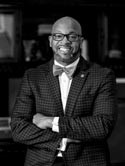
As Radford University’s seventh president, Brian O. Hemphill, Ph.D. (2016-2021) was an unwavering champion for positive change and a true advocate of shared governance. With strong support from students, faculty, staff, alumni, friends, the local communities, including the New River Valley and the Roanoke Valley, and the Commonwealth of Virginia, President Hemphill led the Highlander family with a steadfast commitment to excellence, accountability, transparency and student-centeredness.
Among the significant accomplishments during his tenure were the establishment of Radford University Carilion, which stemmed from a merger with Jefferson College of Health Sciences, as well as an annual investment of $10 million from the Commonwealth of Virginia to equalize tuition; a $101 million investment to construct the Artis Center for Adaptive Innovation and Creativity, representing the largest investment and building in the institution’s history; the $34 million renovation of Reed and Curie Halls; the launch of the competency-based education program IMPACT; the creation and implementation of a bold and visionary five-year strategic plan and the ten-year master plan; and a public/private partnership that resulted in the Highlander Hotel.
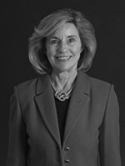
The sixth and first female president, Penelope Ward Kyle, J.D. (2005-2016) is a native of Southwest Virginia. She holds a Juris Doctor from the University of Virginia School of Law and a Master of Business Administration from the College of William and Mary. She received her undergraduate degree from Guilford College in Greensboro, N.C. Before coming to Radford University, Kyle had more than 30 years of experience in state government, higher education and the corporate and legal worlds.
During Kyle’s tenure, Radford University secured approval and funding for more than $330 million in capital projects, including the construction of the College of Humanities and Behavioral Sciences building, the Center for the Sciences, the Student Recreation and Wellness Center and the College of Business and Economics, named Kyle Hall. Her career at Radford University was also notable for securing approval from the Commonwealth of Virginia to offer the university’s first doctoral degrees.
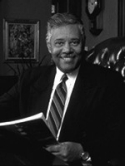
A native of Winston-Salem, N.C., Douglas Covington, Ph.D. (1995-2005) was a graduate of Central State University and held both a master’s degree and Ph.D. from Ohio State University. Before coming to Radford in 1995, he served as president of Cheyney University in Pennsylvania, known as the first institution of higher learning for African Americans.
During his tenure at Radford, Dr. Covington presided over the university’s first capital campaign and led the efforts toward completing the university's first strategic plan. New construction completed included Waldron Hall, Cook Hall, Martin Hall and Cupp Stadium. His greatest legacy was his tireless advocacy for the arts. The building now known as The Douglas and Beatrice Covington Center for Visual and Performing Arts was Dr. Covington's "dream" and opened after his retirement.
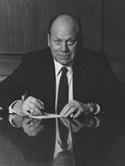
A Missouri native, Donald Newton Dedmon, Ph.D. (1972-1994) received his undergraduate degree from Southwestern Missouri State College. He pursued his M.A. and Ph.D. at the University of Iowa. His career included teaching experience at both the high school and college levels before he moved into university administration at Colorado State University and Marshall University. Prior to coming to Radford, Dr. Dedmon served as Marshall’s executive vice president and acting president.
During the two decades that Dr. Dedmon served as Radford’s president, the university experienced unprecedented growth in campus size, curriculum and student population. Dr. Dedmon was a staunch supporter of the importance of faculty teaching at a time when many other institutions were emphasizing research over classroom work.

Also a Missouri native, Charles Knox Martin Jr., Ph.D. (1952-1972) attended Southwest Missouri State College for his undergraduate and graduate studies. In the late 1930s he received his Ph.D. from Yale. Dr. Martin went on to teach at Mary Washington College in Fredericksburg, Virginia, both before and after World War II.
During the twenty years that Dr. Martin served as president, he oversaw the dissolution of the RC-VPI marriage and the advancement of Radford College as its own individual institution.
As a leader in teaching education in Virginia, Radford’s student population increased sharply; 22 buildings and additions were added to the campus; and the amount of majors offered by the college more than doubled. The largest women’s college in the state at the time, Radford College was also one of the most productive, having been cited as the “most efficiently managed institution in the state.
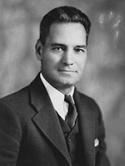
Born in Franklin County, Virginia, David Wilbur Peters, Ph.D. (1938-1951) pursued his undergraduate degree at Roanoke College. He received both his M.A. and Ph.D. from Columbia University. Dr. Peters was no stranger to Radford when appointed president. He had visited the campus many times as a member of the State Department of Education.
His professional career also included several teaching and administrative positions in Campbell County and Richmond. He was married to Anne Bruce of Rockbridge County. During his tenure as president, Dr. Peters oversaw the transition of Radford to the Women’s Division of VPI and guided the school through tremendous post-World War II growth.
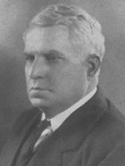
John Preston McConnell, Ph.D. (1911-1937) was born in Scott County, Virginia. Before serving as Radford’s first president, McConnell had served for nine years as dean and professor of history and economics at Emory and Henry College. He received both his bachelor’s degree and M.A. from Milligan College and pursued his Ph.D. at the University of Virginia. He met and married his wife, Clara Louise Lucas, while at Milligan. Though his beliefs were unfashionable at the time, Dr. McConnell was a strong supporter of the need for quality education for women.
His career at Radford was marked by efforts to ensure equal access to information, courses and materials for female students. McConnell Library, bearing his name, is a testament to his undying quest for excellent facilities on Radford’s campus.